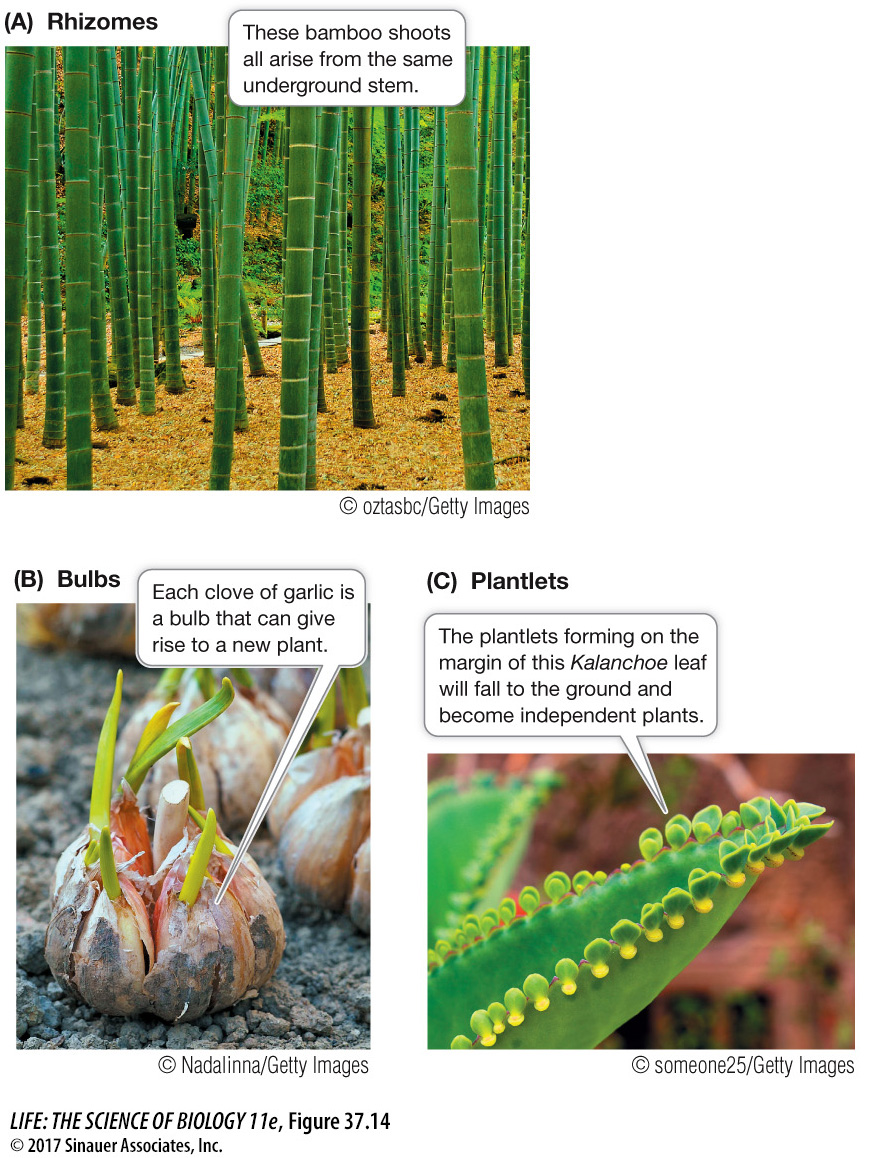Plants reproduce asexually by several methods
Stems, leaves, and roots are considered vegetative organs and are distinguished from flowers, the reproductive parts of the plant. Asexual reproduction is often accomplished through the modification of a vegetative organ, which is why the term vegetative reproduction is sometimes used to describe asexual reproduction in plants. Often the stem is the organ that is modified for vegetative reproduction. Strawberries, for example, produce horizontal stems, called stolons or runners, which grow along the soil surface, form roots at intervals, and establish potentially independent plants. Asexual reproduction by shoot tips is accomplished when the tips of upright branches sag to the ground and develop roots, as in blackberry and forsythia.
Some plants, such as potatoes, form enlarged fleshy tips of underground stems, called tubers, that can produce new plants (from the “eyes”). Rhizomes are horizontal underground stems that can give rise to new shoots. Bamboo is a striking example of a plant that reproduces vegetatively by means of rhizomes. A single bamboo plant can give rise to a stand—

Whereas stolons and rhizomes are horizontal stems, bulbs and corms are short, vertical, underground stems. Lilies and garlic form bulbs (Figure 37.14B), short stems with many fleshy, highly modified leaves that store nutrients. These storage leaves make up most of the bulb. They can give rise to new plants by dividing or by producing new bulbs from axillary buds. Crocuses, gladioli, and many other plants produce corms, underground stems that function very much as bulbs do. Corms are disclike and consist primarily of stem tissue; they lack the fleshy modified leaves that are characteristic of bulbs.
Stems are not the only vegetative organs modified for asexual reproduction. Leaves may also be the source of new plantlets, as in some succulent plants of the genus Kalanchoe (Figure 37.14C). Many kinds of angiosperms, ranging from grasses to trees such as aspens and poplars, form interconnected, genetically homogeneous populations by means of suckers—
Plants that reproduce vegetatively often grow in physically unstable soils such as eroding hillsides. Plants with stolons or rhizomes, such as beach grasses, rushes, and sand verbena, are common pioneers on coastal sand dunes. Rapid vegetative reproduction enables these plants, once introduced, not only to multiply but also to survive burial by the shifting sand; in addition, the dunes are stabilized by the extensive network of rhizomes or stolons that develops. Vegetative reproduction is also common in some deserts, where the environment is often not suitable for seed germination and the establishment of seedlings.